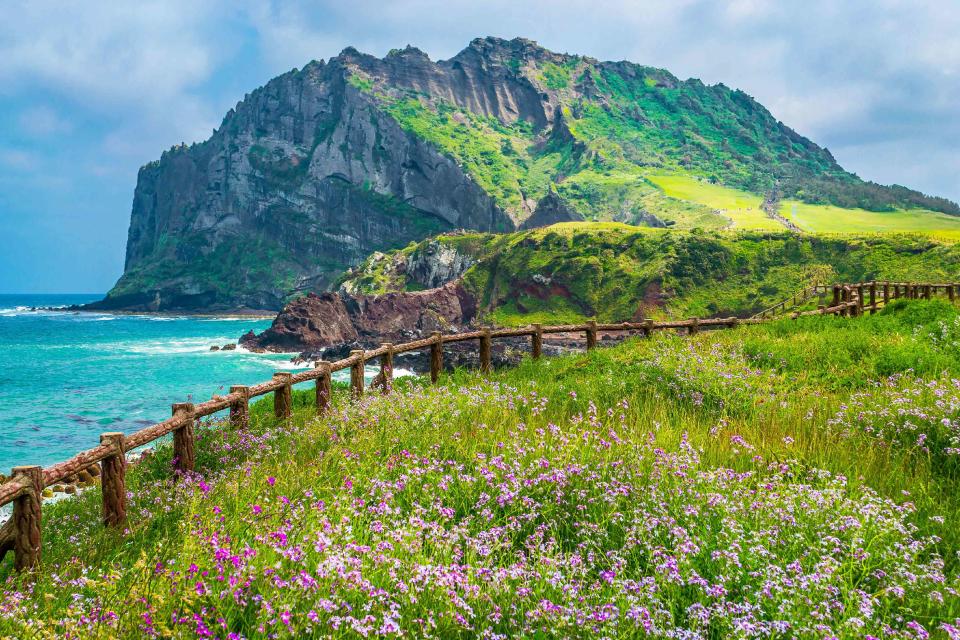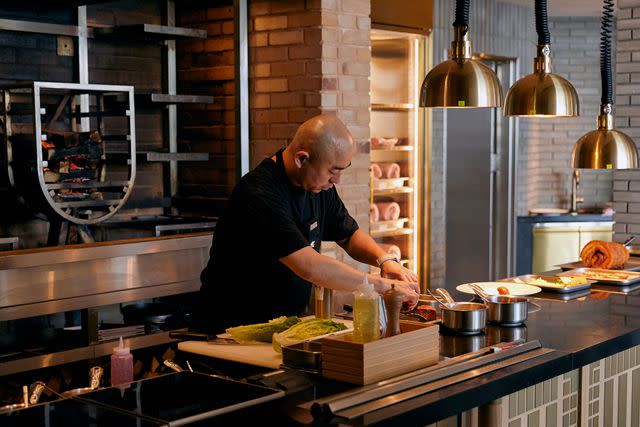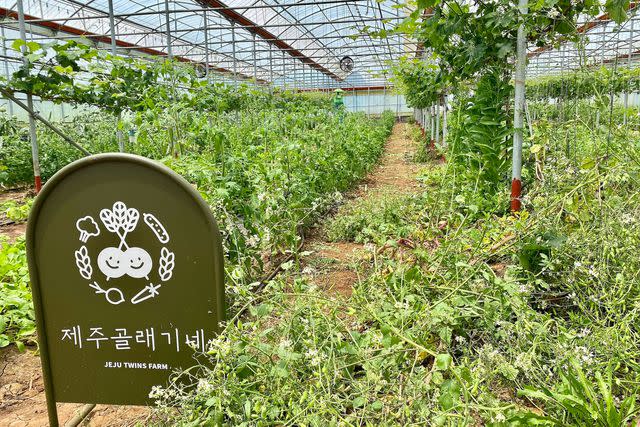Everything You Need to Eat on Jeju Island, South Korea's Gorgeous Island Paradise
Jeju Island is nicknamed "the Hawai'i of Korea” by locals. However, it’s a destination that needs no comparison, and one you should get to know immediately.

Getty Images
With a subtropical climate and striking features, including a hovering dormant volcano named Hallasan, waterfalls that tumble into the sea, dense green forests, and immaculate beaches with gin-clear water, Jeju Island is aptly nicknamed the “Hawai'i of Korea” by locals. However, it’s a destination that needs no comparison, and one you should get to know immediately.
Despite being on the world’s busiest flight route and being a popular honeymoon spot (many Korean newlyweds, including my parents, zip over for a post-nuptials getaway), along with being named a UNESCO World Heritage Site, Jeju remains rather under the radar for foreigners. In 2022, the island recorded a record 13.59 million visitors. However, more than 99% of them were locals.
Even less explored is the island’s fantastic culinary landscape. Though diverse and long linked to the region’s rich natural surroundings, most coverage of the food here has concentrated on tourist traps. But a mix of new and older, well-deserving-of-the-spotlight eateries are widening public perception by reimagining staples in fresh ways and highlighting lesser-known traditions and ingredients. Here are three establishments shaping Jeju Island into a destination for hungry travelers from Korea and beyond.
For a luxurious stay and unforgettable meals: JW Marriott Jeju Resort & Spa

Courtesy of JW Marriott Jeju Resort & Spa
For decades, a few past-their-prime properties dominated the area hotel scene. Then, everything changed when the highly anticipated JW Marriott Jeju Resort & Spa opened in March. The thoughtful, striking design by Bill Bensley — he’s behind some of Asia’s most iconic properties like Four Seasons Golden Tented Camp Golden Triangle — pays homage to Jeju throughout, from the prominent use of yellow, a color symbolizing the earth and good fortune, to the hanok-inspired reception area where you’re welcomed with local peanut candies and tea. But it’s the Jeju-focused dining outlets that cinch the new hotel as the island’s top place to stay.
Instead of grilling black pig belly like most locals, resort executive chef Joon Ko at The Flying Hog massages Korean salt into the prized cut’s scored skin and lets it rest in the fridge for three days. Then, he cooks it in a convection oven at a low temperature for three hours before finishing it in a wood-fired oven. The result resembles porchetta: it’s round with meltingly tender meat, but the skin is startlingly thick, bubbly, and crackles under your teeth. And to show diners what Jeju’s unique volcanic red soil can yield beyond the usual tangerines, cabbage, and carrots, Ko makes twice-weekly excursions to Jeju Twins Farms, a certified organic farm owned by a husband-wife team, to source non-native produce such as apple cucumbers, a sweet and citrusy variety he discovered while working in Australia.
Meanwhile, at Yeoumul, a sleek omakase restaurant hidden in plain sight — the entrance is adjacent to an elevator and marked with a small sign of a fox peering into the water — the sushi chefs squarely spotlight Jeju’s ocean bounty with delicate but intensely flavorful courses such as red tilefish broth, flash-fried abalone, and mackerel sashimi.
To learn about Jeju foodways: Sesimjae

Katie Chang
Sesimjae, a cultural center that promotes and preserves Jeju foodways, isn’t new, but surprisingly remains unknown by many Jejuans and mainlanders. Under the guidance of 80-year-old JeungSoon Koh, a former professor and Jeju’s second traditional food master (a title bestowed by the government), the institute spans a gallery, learning center, and kitchen.
Koh’s goal is simple: to raise awareness of Jeju’s complex culinary heritage, dispel classist misconceptions, and ensure future generations will appreciate what makes eating and drinking in Jeju so singular and remarkable. “I was once embarrassed about my food,” she recalls. “But in recent years, our reputation shifted from being called poor to healthy. Our traditional food has always been advantageous in that it makes the most of the natural environment, from storage to cooking methods.”
If you want to try something representative of this ethos, Koh recommends jari mulhoe. Translated as "raw fish water," Jeju’s version of the icy soup slurped during hot summer months swaps out the spicy-smoky red pepper flakes and paste used on the mainland with raw soybean paste and vinegar made from fermented barley. Since red peppers don’t grow easily in native soil, locals adapted with pantry staples.
For the best Jeju beach picnic: 15 Degrees

Getty Images
WonTae Lee’s interest in charcuterie sparked while cooking at Michelin-starred establishments across Europe and Australia. “I was fascinated by the intense flavor that can only be achieved by dry-aging and fermenting meat,” he says. However, things didn’t click until he wondered about the cuts of black pig not typically eaten by Jejuans.
“Most people consume black pork by simple barbecue, and that’s why pork belly and neck meat — which are preferred for grilling — are very expensive,” he shares. “But less favored, inexpensive leg meat has the same high quality and flavor.”
Thus, the concept for 15 Degrees, a Jeju City café and delicatessen open since October 2021, was hatched. The specialty is classic charcuterie featuring black pork, from dry-cured, French-style hams to assorted salumi. For an unforgettable picnic lunch, order a charcuterie board or signature sandwich — the overstuffed pastrami on sourdough is a solid pick — fries, and a Korean Magpie Pale Ale to go, and scoot over to the nearest beach. There, you can ponder if you want to tell all your friends about this magical place when you get back home, or keep it as a secret all for yourself.
For more Food & Wine news, make sure to sign up for our newsletter!
Read the original article on Food & Wine.

